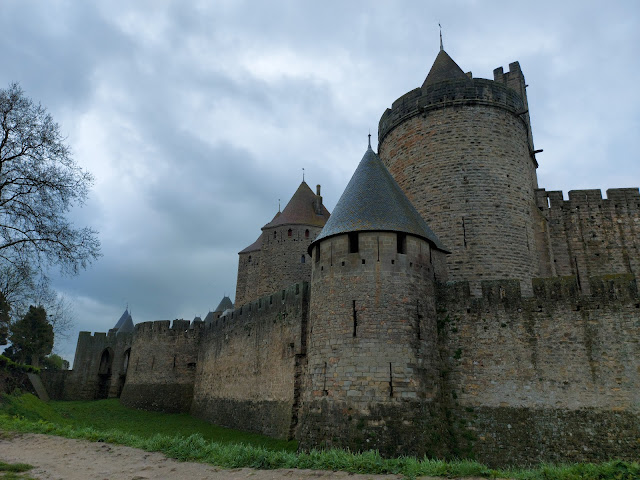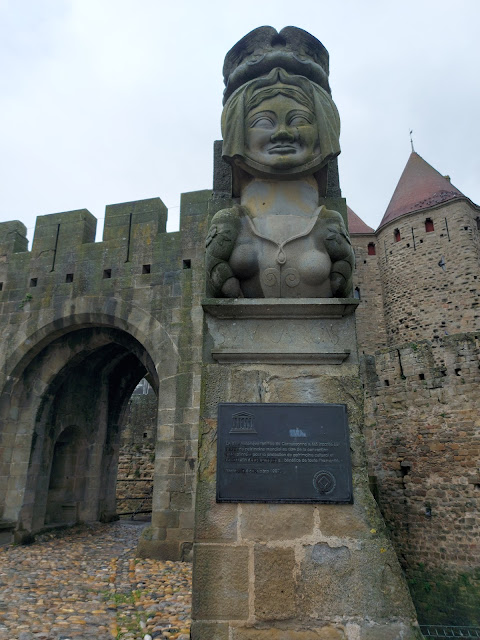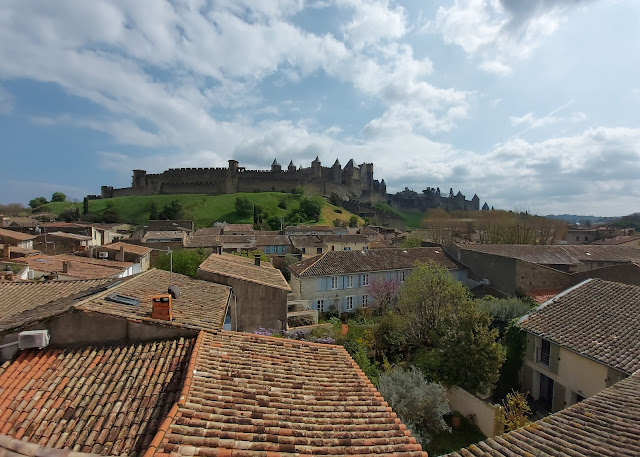 |
| Carcassonne is home to a massive citadel built up from Roman times through the 17th century. |
 |
| The Visigoths made the first major additions to the citadel. |
 |
| The city is supposedly named after Lady Carcas, who supposedly ended a siege by tricking Charlemagne's soldiers into thinking Carcassonne had plenty of food to hold out. |
 |
| The city became a hub of the Cathar hersesy, and the Cathars were expelled in 1209 during the Albigensian Crusade. |
 |
| The city came under the control of France in 1247 and became an important border fortress with Spain. |
 |
| The citadel was viewed as impregnable after its expansion by the French crown. It withstood a siege by the Black Prince during the 100 Years War. |
 |
| After France took Roussillon in 1659, the French border moved south and Carcassonne lost strategic importance. |
 |
| By the 1800s Carcassonne had fallen into complete disrepair, so Viollet-le-Duc was commissioned to restore the citadel. |
 |
| Lady Carcas |
 |
| Head corbels |
 |
| Funeral stele |
 |
| A 12th century fountain |
 |
| A trace of Roman Carcassonne |
 |
| The town of Carcassone often did not get along with the Citadel of Carcassonne. |
 |
| A theater has been built in a corner of the citadel. |
 |
| Wine is grown just outside Carcassonne's walls |
 |
| The Basilique Saint Nazaire |
 |
| You can't go to Carcassonne and not eat Cassoulet. |
 |
| Carcassonne in Carcassonne |
 |
| One of France's great foods, the foie gras burger. |
 |
| Spectacular! |





No comments:
Post a Comment